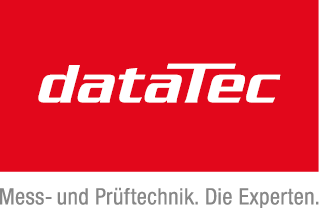#statusMessage#
Do you want to start the compare now?
#statusMessage#
Do you want to start the compare now?
Manufacturer number: ELR10920-603U
| AC input: | 208 - 480 VAC |
|---|---|
| Article number: | 33200854 |
| DC output reversible: | DC sink |
| Dimensions (L x W x H) (mm): | 668 x 482.6 x 133.35 |
| Interfaces: | USB, Ethernet, Analog |
| Mains feedback: | Yes |
| Model: | ELR10920-603U |
| Output power (W): | 15000 |
| Protective devices: | OVP, OCP, OPP, OTP |
| Weight (kg): | 32.8 |
| max. Power (A): | 60 |
| max. voltage (V): | 920 |
The programmable regenerative DC loads of the EA Elektro-Automatik ELR 10000 series work regeneratively and feed the energy back into the local power grid with an efficiency of over 96%. This reduces your costs, as the energy is not converted into heat as with conventional loads.
The ELR 10000 series includes single-phase and three-phase devices that can serve almost all mains voltages worldwide with their wide AC input range. The DC voltages and currents are geared towards applications, with the spectrum ranging from 0 - 80 V to 0 - 2000 V and from 0 - 6 A to 0 - 1000 A in a single device. The DC loads act as a flexible input stage with a constant power characteristic, so-called autoranging, as well as a large voltage, current and power range.
In order to realize higher power and currents, all devices have a master-slave bus. With 64 devices connected in parallel, this enables the creation of a system that provides up to 1920 kW and 64,000 A load. This system works like a single device and can consist of different power classes, only the voltage class must match.
A function generator is integrated into all electronic loads in the EA ELR 10000 series. This can be used to easily call up curves such as sine, triangle, square and trapezoid. Voltage and current curves can be freely programmed via a ramp function and an arbitrary generator. For recurring tests, test sequences can be saved and reloaded as required, saving valuable time.
As standard, EA devices are equipped with the most important digital and analog interfaces, which are also galvanically isolated. These include an analogue interface, which has parameterizable inputs and outputs with 0-5 V or 0-10 V for voltage, current, power and resistance, various functional inputs and outputs as well as a USB and Ethernet interface.
Typical applications for the ELR 10000 electronic loads from EA Elektro-Automatik include testing the electrical properties of a battery. The wide range of applications includes cell, module or pack tests, determining the SOH (State-Of-Health) for second-life classification and the end-of-line test (EOL).
The ELR 10000 series devices are ideal for testing the electrical properties of fuel cells, fuel cell stacks and fuel cell systems. They generate highly accurate and reproducible results in all electrical modes. To test the resistance, performance and service life of a fuel cell quickly and cost-effectively, the loads can be easily integrated into an automatic test system. The regenerative capability ensures highly energy- and cost-efficient use.
The electronic loads can be used to test the electrical properties as part of an on-board charger test (OBC). This requires a flexible test system that also provides measurement data. With the sequencing & logging function, test sequences can be loaded into the ELR 10000 devices and data can be read out and saved.
The programmable electronic loads of the ELR 10000 series can also be used to test discarded batteries from electric vehicles for their potential reuse. When characterizing the battery pack, the battery is first checked for its residual capacity (state-of-health) to determine its suitability for a second life. This permanently integrated function can be called up at the touch of a button.
The version ELR 10920-60 of the ELR 10000 electronic load series presented here measures 3 U (3U) and has 0 - 920 V, 0 - 60 A, 0 - 15,000 W and, like all models in the ELR 10000 series, an integrated function generator.


